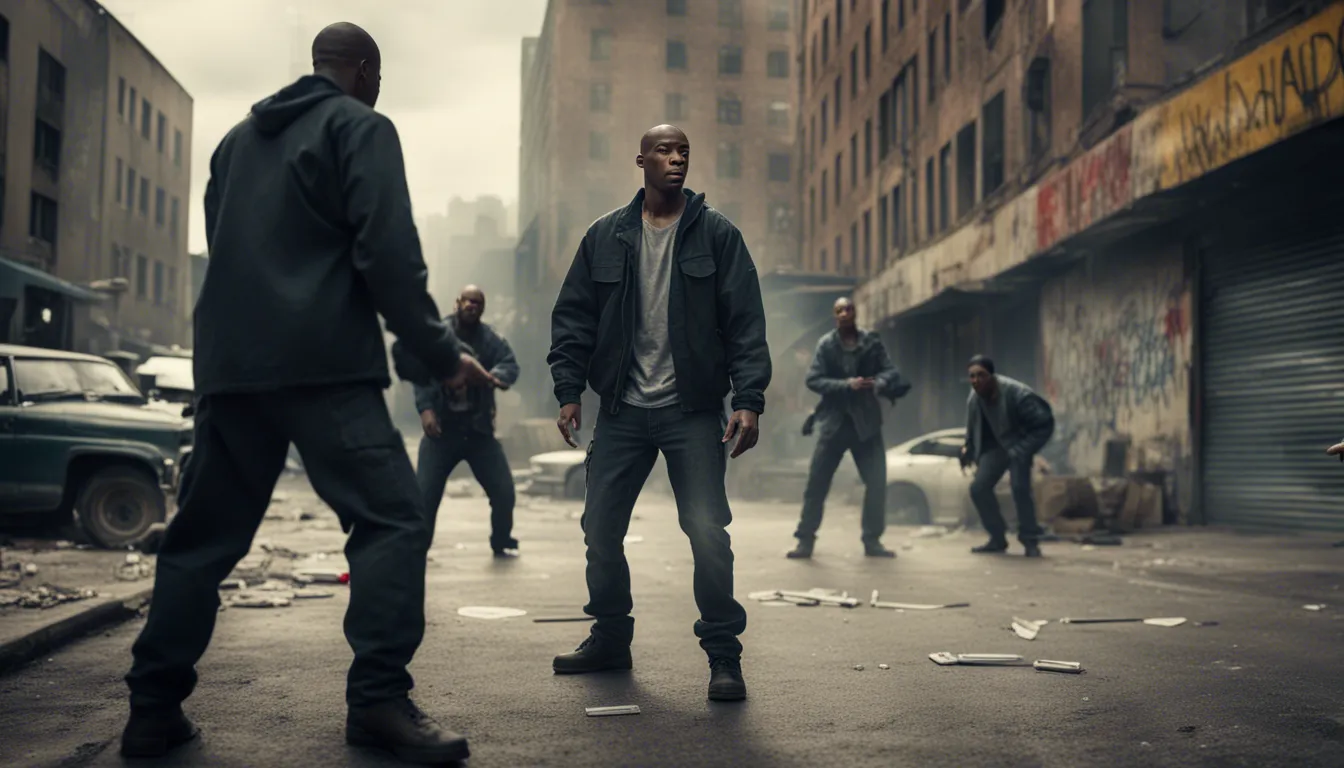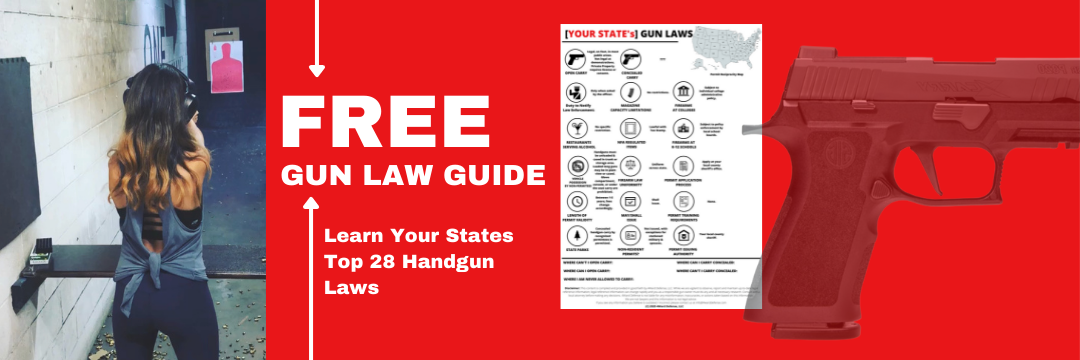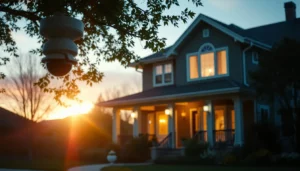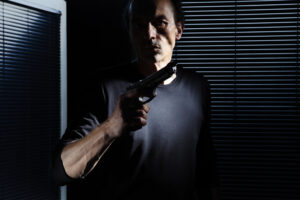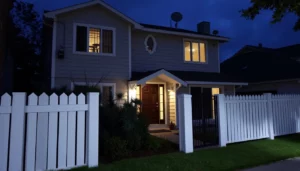Urban self defense isn’t just some buzzword. It is what keeps you alive when the city shows its teeth.
Think about the last time you felt uneasy walking down a street or taking that shortcut home.
Now imagine having the confidence to handle those situations, knowing you’ve got the right skills to protect yourself when things go sideways.
Cities are unpredictable. One minute you’re grabbing coffee, the next you’re sizing up a threat in a cramped alley.
In this article, I have picked the top 5 urban self defense styles. They’re built for real streets, real threats, and real situations you might face.
No flashy moves, no Hollywood nonsense – just practical skills that work when you need them most. Let’s cut through the bullshit and get to what really works.

Protect your family and property in uncertain times!
Before we continue, let me introduce you to Guerilla Home Defense — the ultimate survival guide for navigating the uncertain times ahead.
Covering all three stages of the impending crisis in America, this guide equips you with the tools to protect your home from the surge in crimes like break-ins and attacks, handle the chaos of riots and looting, and even prepare for the potential of civil war.
If you’re serious about staying safe when disaster strikes, Guerilla Home Defense is a must-have resource.
5 Best Self Defense Styles for Urban Survival
In the city, knowing how to defend yourself is key. You need to move fast in crowds and be ready for fights up close.
Here are the 5 best self-defense styles for urban survival:
#1: Parkour
Parkour originated in France, developed by Raymond Belle, a French military veteran and firefighter, who learned his foundation from the military obstacle course training “parcours du combattant.”
His son, David Belle, along with Sébastien Foucan and a group called the Yamakasi, transformed these military-inspired movements into an urban discipline during the 1980s in the suburbs of Paris, particularly Lisses and Évry.
At its core, parkour (from the word “parcours” meaning “the path”) is about moving through any environment as efficiently as possible using only your body.
The philosophy comes from Georges Hébert’s “Natural Method” of physical training, embodied in the motto “Be strong to be useful.”
Fundamental Techniques
The fundamental techniques include:
- Precision jumps between objects
- Cat leaps to walls
- Kong vaults over obstacles
- Roll techniques to absorb impact
- Wall runs and climbs
- Balance training
- Dropping and landing safely
- Efficient running and movement paths
Parkour as an Urban Self Defense Tool
In the context of honing your urban survival skills and avoiding conflict, parkour offers unique advantages.
Instead of being restricted to streets and conventional paths where confrontations typically occur, parkour training enables you to:
- Identify alternate routes through urban environments
- Move vertically as well as horizontally through spaces
- Navigate obstacles that would stop most people
- Quickly change direction when needed
- Move through tight spaces efficiently
- Scale walls to access different levels
- Safely drop from heights when necessary
Critical to using parkour for conflict avoidance is the focus on practical, efficient movement rather than flashy techniques. The goal isn’t to show off – it’s to move effectively from point A to point B while expending minimal energy and avoiding confrontation entirely.
#2: Concealed Carry Firearm Training
Carrying a firearm for personal defense demands thorough training, a clear understanding of responsibilities, and an unwavering commitment to safety.
Concealed carry firearm training equips individuals with the skills to handle and use a firearm only when all other options have been exhausted.
Selecting the Right Firearm
Choosing the right firearm for concealed carry can be overwhelming with so many options, each with its own strengths and features suited to personal preference and various urban scenarios.
Two popular options frequently chosen by concealed carry practitioners include:
- Glock 19: Compact, reliable, and known for its simplicity and ease of use, the Glock 19 is a go-to choice for many. Its size makes it comfortable to carry daily, while its user-friendly design offers a balance of power and precision.
- Smith & Wesson M&P Shield: This is a slim, lightweight option with high concealability. Its intuitive safety features and ease of handling make it ideal for those new to concealed carry as well as seasoned carriers seeking a lightweight alternative.
For those considering home defense or specific training scenarios beyond typical city carry, larger options like the AR-15 are sometimes preferred for their stopping power and accuracy, though they’re less practical for everyday concealment in urban environments.
Decorated Green Beret Reveals:
Fundamental Techniques in Concealed Carry Training
Effective training encompasses both the physical handling of the firearm and the mental discipline to use it responsibly. Fundamental techniques include:
- Grip and Stance: Proper grip and stance form the foundation of shooting accuracy and recoil control. Practitioners learn the best techniques for drawing, holding, and firing under pressure.
- Draw Technique: Training includes practicing smooth, safe, and efficient draw techniques to reduce response time in an emergency.
- Aiming and Trigger Control: Key elements of marksmanship, aiming and trigger control determine accuracy. Practitioners focus on steady, controlled trigger squeezes and precise aim.
- Situational Awareness: In the context of self-defense, situational awareness is critical. Training instills an acute awareness of surroundings, helping carriers assess threats and respond only when necessary.
- Decision-Making Under Pressure: Concealed carry training teaches decision-making skills to determine when (or when not) to draw the firearm, focusing on conflict de-escalation whenever possible.
Concealed Carry as a Tool for Self Defense
Concealed carry firearm training emphasizes that the weapon is a last-resort tool, intended for use only in life-threatening situations.
Key advantages of concealed carry for personal defense in urban environments include the ability to:
- Maintain a Low Profile: Concealed carry provides the advantage of blending in without drawing attention to the fact that one is armed, which can help avoid escalation.
- De-escalate Situations with Confidence: The knowledge and confidence gained from training help individuals stay calm in tense situations, often allowing them to de-escalate without ever drawing their firearm.
- Respond Quickly When Necessary: For situations where there are no other options, trained carriers can respond promptly, using their skills to protect themselves and those around them effectively.
Concealed Carry Training Progression
The journey of mastering concealed carry is continuous and begins with foundational skills. Training progression often includes:
- Basic Firearm Safety and Handling: Training starts with understanding firearm safety rules, safe handling practices, and firearm mechanics.
- Developing Accuracy and Control: Initial sessions focus on basic marksmanship, with exercises to develop accuracy, precision, and trigger control.
- Real-World Scenario Training: As trainees advance, they engage in scenario-based training that mimics real-world situations, such as defensive shooting, handling malfunctions, and assessing threats under pressure.
- Advanced Concealed Carry Techniques: Advanced training covers high-stress drills, defensive tactics, and rapid response techniques, which prepare individuals for various potential encounters.
- Ongoing Practice and Legal Education: Concealed carry practitioners are encouraged to stay updated on firearm laws, attend refresher courses, and engage in regular practice to maintain their skills.
#3: Concealed Carry Melee Weapon Training
Small, easily accessible, and less intimidating than firearms, melee weapons offer a unique advantage by equipping individuals with tools they can carry confidently and use only when necessary.
Selecting Practical Melee Weapons for Everyday Carry
Several everyday items can double as powerful tools in close-range self-defense, with some of the most popular options including:
- Tactical Pens: Designed to function as both a writing instrument and a self-defense tool, tactical pens are made of durable metal, often featuring a pointed tip for striking. They’re small, discreet, and legally permissible in most locations.
- Compact Flashlights: High-lumen tactical flashlights serve a dual purpose. They can temporarily disorient an attacker with intense light and, when necessary, act as a blunt-force weapon to disable an assailant.
- Kubotans: These small rods fit easily on a keychain or in a pocket and are often used for pressure point strikes, providing an effective way to defend against grabs or holds in close quarters.
FREE Light Saver Tactical Torch
Fundamental Techniques for Concealed Carry Melee Weapon Training
Concealed carry melee weapon training emphasizes learning to use these tools effectively in close-contact situations, where reaction time is limited. Fundamental techniques include:
- Grip and Control: Effective melee weapon usage begins with proper grip and control to ensure that strikes are accurate and stable. This is crucial for objects like tactical pens and flashlights.
- Targeted Strikes: Practitioners learn to focus strikes on vulnerable areas, such as the eyes, throat, and other pressure points, which can neutralize a threat without excessive force.
- Defensive Movements: Training covers techniques for blocking and redirecting attacks, allowing the defender to quickly counter while maintaining control of the weapon.
- Using Light for Disorientation: With tactical flashlights, individuals practice using high-intensity light to temporarily blind and disorient attackers, creating an opportunity to evade or disable the threat.
- Engagement and Disengagement: Training emphasizes the importance of quickly engaging and then disengaging from the threat, with an emphasis on maintaining distance and assessing safe escape options.
Advantages of Melee Weapons in Self-Defense
Melee weapons provide a range of benefits for personal defense, especially in environments where a firearm may not be appropriate. Key advantages include the ability to:
- Maintain Low Visibility: Melee weapons like pens or flashlights are easy to conceal and unlikely to attract attention, making them excellent options for subtle self-defense.
- Respond Quickly in Tight Spaces: These tools can be accessed and used effectively in confined spaces where a firearm may be challenging or unsafe to draw.
- Avoid Escalation to Lethal Force: By providing non-lethal options, concealed carry melee weapons allow for self-defense without risking fatal injury to the attacker, helping reduce potential legal consequences.
- Defend in Non-Threatening Ways: Carrying a tactical pen or flashlight is unassuming, allowing individuals to feel secure without appearing threatening.
Progression of Melee Weapon Training
Building proficiency with concealed carry melee weapons requires practice and familiarization with the tools. Training progression generally involves:
- Basic Familiarity and Handling: Training begins with understanding the structure and usage of each weapon, learning the basics of grip, control, and movement.
- Targeted Strike Practice: Practitioners advance to practicing precise strikes on target points, developing accuracy, speed, and consistency.
- Situational Drills: Scenario-based training simulates real-world encounters, allowing practitioners to develop reflexive defensive moves in response to grabs, holds, or other close-contact threats.
- Light Disorientation Tactics: For flashlight carriers, training includes practice with blinding maneuvers to create temporary distance and facilitate escape.
- Regular Repetition and Reinforcement: Practitioners are encouraged to regularly practice and reinforce skills to ensure they can respond effectively under pressure.
#4: Striking Style Martial Arts (Boxing, Muay Thai)
Striking martial arts like Boxing and Muay Thai are designed to teach practitioners powerful, effective self-defense techniques for close-range encounters.
Known for their focus on striking with speed, precision, and control, both of these martial arts provide practical skills that are invaluable in situations where space is limited, and quick reaction is essential.
Benefits of Striking Style Martial Arts for Self-Defense
Boxing and Muay Thai offer specific advantages for self-defense, particularly in close encounters where rapid response is crucial. Practicing these striking styles builds:
- Speed and Precision: Training in boxing and Muay Thai develops reflexes and hand-eye coordination, allowing practitioners to respond to threats quickly and accurately.
- Physical Conditioning and Resilience: The rigorous conditioning associated with these martial arts builds endurance, strength, and mental toughness, helping practitioners stay calm under pressure.
- Adaptability in Confined Spaces: These martial arts teach techniques suitable for tight or confined areas, making them ideal for self-defense in crowded or urban settings.
- Confidence and Awareness: Beyond physical skills, striking arts cultivate situational awareness and self-assuredness, helping individuals assess and respond to threats before they escalate.
Training Progression in Striking Martial Arts
Mastery in Boxing and Muay Thai requires practice, dedication, and a gradual progression through increasingly challenging techniques. Typical training progression includes:
- Foundation of Basic Strikes and Defense: Beginners start with core strikes and simple defensive moves, focusing on accuracy and technique.
- Combination Drills and Footwork Practice: Practitioners learn to link punches, elbows, knees, and kicks in fluid combinations while incorporating footwork for balance and agility.
- Sparring and Controlled Contact Drills: Sparring sessions with training partners simulate real situations, helping practitioners develop timing, distance control, and resilience.
- Advanced Techniques and Strategy: Advanced training involves mastering complex combinations, clinching strategies, and defensive tactics specific to real-life situations.
- Continual Conditioning and Reflex Training: Ongoing training includes conditioning and reflex exercises to maintain strength, speed, and accuracy.
#5: Grappling Style Martial Arts (Wrestling, Brazilian Jiu-Jitsu, Judo)
Grappling martial arts like wrestling, Brazilian Jiu-Jitsu (BJJ), and Judo focus on close-contact skills that allow practitioners to control, subdue, and neutralize threats without excessive force.
These arts teach leverage, positioning, and submission techniques that can be invaluable for self-defense, especially in confined or crowded spaces.
Wrestling: The Art of Dominance
Wrestling emphasizes powerful takedowns, ground control, and physical dominance, making it an ideal discipline for neutralizing threats. Key aspects of wrestling for self-defense include:
- Takedowns and Throws: Wrestlers are trained to bring opponents to the ground quickly and effectively, an important skill for managing threats in confined spaces.
- Top Control and Ground Dominance: Wrestling teaches techniques to maintain control from the top position, allowing the practitioner to hold down or neutralize an aggressor without causing severe harm.
- Grip Strength and Balance: Wrestlers develop strong grips and balance, essential for keeping control and staying grounded, even against larger opponents.
Brazilian Jiu-Jitsu (BJJ): The Art of Leverage and Submission
Brazilian Jiu-Jitsu specializes in using leverage to control and submit opponents, making it especially effective for smaller practitioners facing larger attackers. Core elements of BJJ include:
- Submission Techniques: BJJ practitioners learn to use holds like armbars, chokes, and joint locks to neutralize threats without inflicting severe damage.
- Guard Position and Defense: BJJ’s guard techniques are vital in self-defense, allowing practitioners to maintain control from their back while protecting against strikes and attacks.
- Positional Control and Escapes: BJJ focuses on maintaining advantageous positions while escaping dangerous ones, allowing practitioners to manage confrontations with precision.
Judo: The Art of Throws and Momentum Control
Judo centers on using an opponent’s momentum against them, with a strong focus on throws and takedowns. Its principles of redirecting force make it especially useful in close-contact scenarios. Key techniques include:
- Throws and Sweeps: Judo teaches practitioners to use their opponent’s force to execute throws, enabling them to bring attackers to the ground decisively.
- Ground Control and Pins: Once on the ground, Judo offers a variety of pins and holds that can subdue an aggressor effectively.
- Balance and Timing: Judo training emphasizes balance and timing, skills that help practitioners evade attacks and respond swiftly.
Benefits of Grappling Arts for Self Defense
Training in grappling arts like Wrestling, Brazilian Jiu-Jitsu, and Judo equips practitioners with close-contact skills suited to real-world self-defense. The benefits include:
- Control Without Excessive Force: Grappling arts focus on control and restraint, enabling practitioners to neutralize threats without inflicting unnecessary harm.
- Adaptability to Confined Spaces: Unlike striking arts, grappling techniques are ideal for small or crowded areas where there may be little room to maneuver.
- Increased Confidence and Composure: Grappling training instills mental resilience and confidence, empowering practitioners to handle threats calmly.
- Physical Conditioning and Functional Strength: Grappling builds functional strength and stamina, enhancing overall fitness and readiness.
Situational Awareness Techniques for Urban Self Defense

Cities are packed with fast-moving people, constant activity, and unexpected situations, each with its own potential risk. The ability to spot and respond to subtle shifts in your environment is essential to staying safe.
One of the most effective practices for maintaining situational awareness is to treat each space as new, even if it’s familiar.
Observe everything as if you’re seeing it for the first time. Survey the layout, take note of exits, and watch for unusual or out-of-place elements that could signal trouble.
Moving with your head up and senses engaged, let your eyes continuously take in both wide and narrow views, instead of fixating on one spot or object.
Keep distractions to a minimum. Smartphones, headphones, and even idle conversations can lower your guard and block critical cues from reaching you.
In crowded areas, this heightened awareness can mean catching something others miss; a sudden shift in crowd movement, someone approaching a bit too quickly, or an item out of place.
A crucial skill for urban situational awareness is recognizing behaviors and postures that indicate risk.
Body language is often the first indicator of a potential threat, and with practice, you can become adept at spotting tell-tale signs: someone unusually fidgety, casting glances around, or trying to hide their hands may be worth a second look.
Unusual or intense focus from someone in your direction could mean more than passing interest.
Trusting your instincts in these moments is vital. If something feels off, it probably is.
De-escalation Strategies for Urban Self Defense
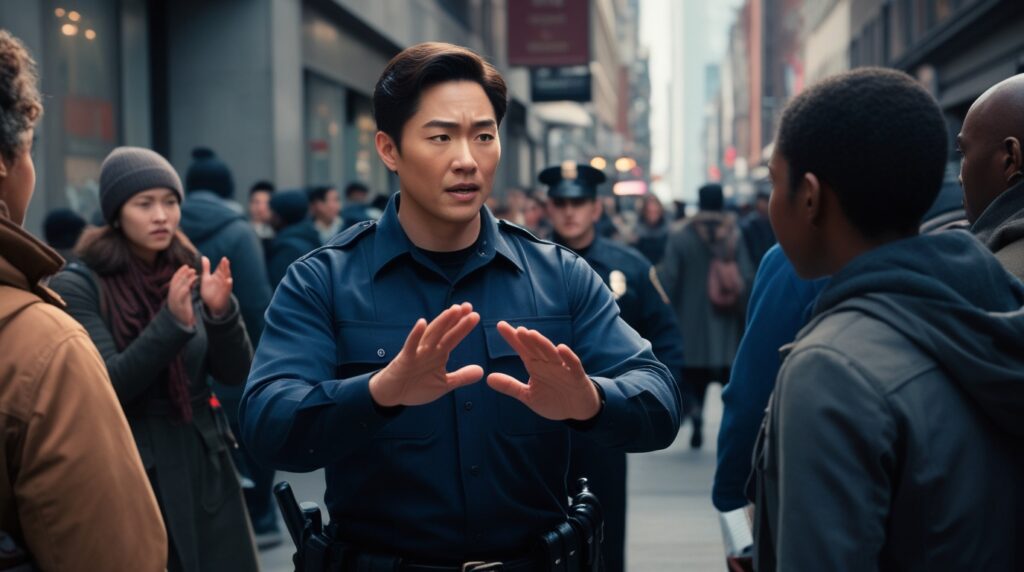
In busy city environments, tempers can flare quickly, and conflicts are best managed by avoiding them altogether. The art of de-escalation is about steering tense situations toward calmer resolutions.
Verbal Judo: Using Words to Defuse Tension
A popular approach to de-escalation is Verbal Judo, which uses words to redirect aggression and cool down conflicts.
With Verbal Judo, the focus is on what you say and, more importantly, how you say it.
By listening carefully, showing empathy, and speaking in a calm and controlled way, you can help the other person feel heard and understood.
Instead of matching anger with anger, you defuse their hostility, giving both of you a chance to step away from conflict.
The goal is to keep communication respectful and clear, making the other person feel valued rather than attacked.
When to Engage and When to Retreat
Knowing when to engage in conversation and when to simply walk away is equally important.
Every situation is different, and sometimes, despite your best efforts, the wisest option is to leave safely before things escalate.
Staying aware of your surroundings, understanding your own limits, and weighing any potential risks can help you make the best decision in a tense moment.
Training and Fitness for Self-Defense
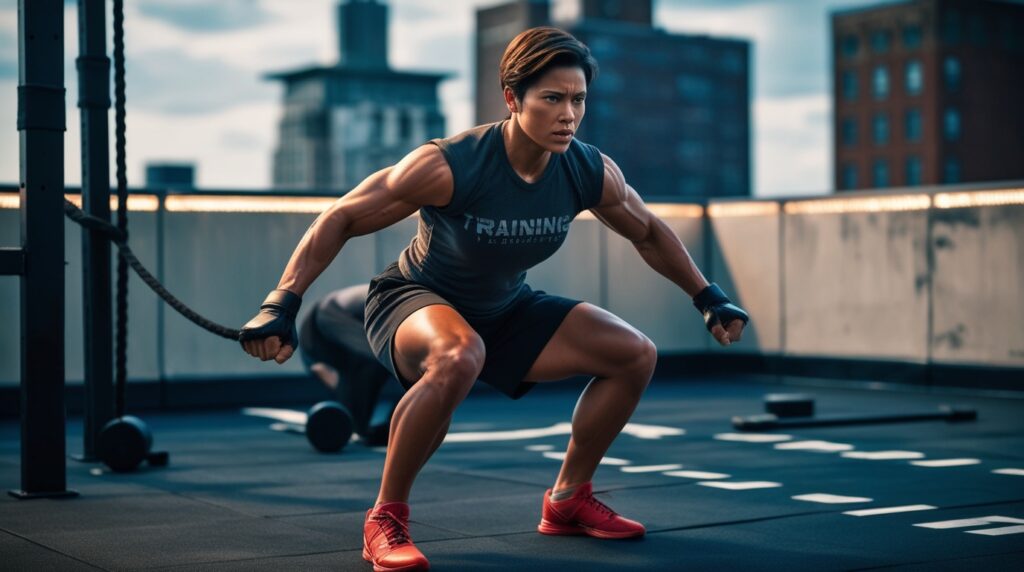
Self-defense goes beyond learning specific moves or techniques.
An approach that includes strength, agility, endurance, and mental conditioning can significantly enhance your personal safety, particularly in the fast-paced and unpredictable settings of urban life.
Incorporating Fitness into Your Self-Defense Routine
To develop a strong physical foundation, add exercises that build speed, strength, and endurance.
High-intensity interval training (HIIT), bodyweight exercises, and plyometric drills all build the explosive power and stamina needed to respond swiftly if danger arises.
Martial arts drills, such as practicing strikes on a heavy bag or sparring with a partner, improve reflexes and keep your reactions sharp.
These exercises build coordination and teach your body to respond instinctively under pressure, making you more adaptable and resilient in tight situations.
The Role of Mental Conditioning in Self-Defense Training
Beyond physical conditioning, mental training is a core part of effective self-defense.
Visualization exercises, for example, can help you mentally rehearse how you’d respond in a confrontation, reinforcing calm and controlled reactions.
Stress management techniques also play a major role; learning how to control your breathing or manage adrenaline helps you stay focused when every second counts.
Developing this mental control can keep your mind clear enough to assess threats accurately and respond in a measured way, reducing the chance of escalation.
Legal Considerations for Self Defense
Urban environments can present high-stakes situations, and understanding how the law interprets self-defense, force, and weapon possession in your area can be crucial to staying on the right side of the law if you ever need to defend yourself.
Laws about carrying self-defense tools and using force can vary widely from city to city or state to state.
Some areas permit concealed carry of firearms under specific conditions, while others impose strict limitations, particularly on lethal weapons.
Equally important is knowing that the amount of force you’re allowed to use generally needs to be proportional to the threat you’re facing.
The “reasonable force” principle varies by region, but generally, you’re only legally protected if the force you use matches the danger you perceive. This means that while martial arts and unarmed combat skills can be invaluable, their use should be carefully measured to avoid crossing legal boundaries.
Conclusion
Mastering urban self defense isn’t about becoming a hot shot warrior but about being prepared while staying under the radar.
The five styles we’ve explored offer different approaches to handling city threats, from parkour’s strategic evasion to the close-quarters control of grappling arts.
Each has its place in the urban defender’s toolkit, and the key is choosing what works best for your situation and capabilities.
Remember, the best self-defense often happens before any physical confrontation.
Strong situational awareness, combined with solid de-escalation skills, can help you avoid most dangerous situations before they escalate.
When that’s not enough, having reliable defensive skills, whether it’s the precision of striking arts, the control of grappling, or the tactical advantage of concealed carry, gives you options for protecting yourself.
Training in any of these styles requires commitment, but the payoff goes beyond just self-defense.
You’ll gain confidence, physical fitness, and mental resilience; all valuable assets for navigating city life.
Just remember to stay within legal boundaries and use appropriate force when necessary.
The city can be unforgiving, but with the right combination of awareness, skills, and judgment, you can move through it safely and confidently.

